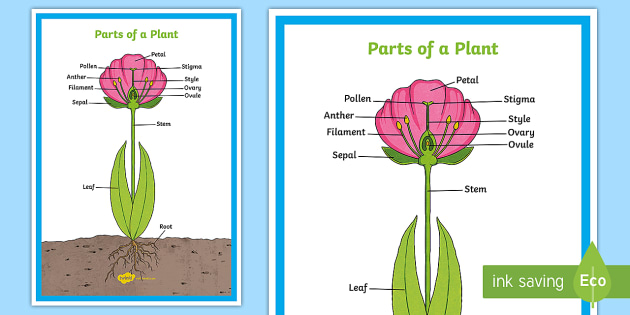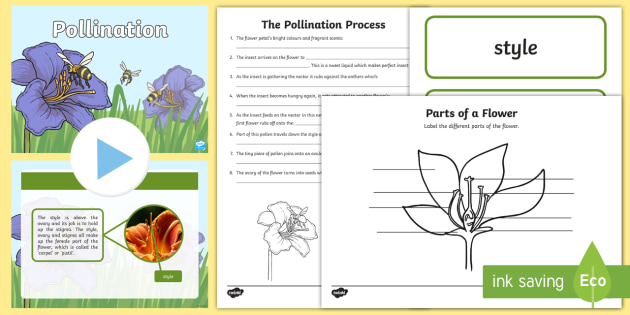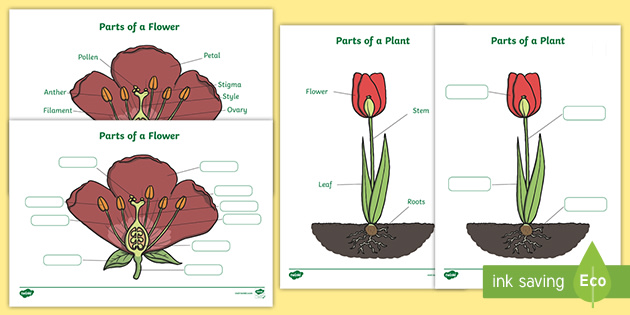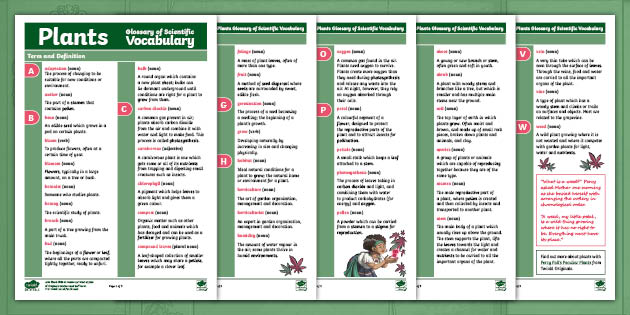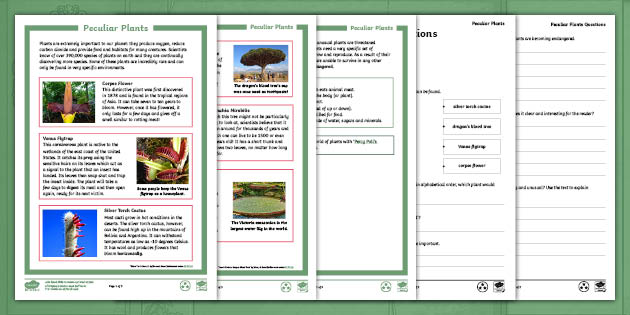

Members of the kingdom Plantae, plants are living organisms that cover much of the land of planet Earth. They include grass, trees, flowers, bushes, ferns, mosses, and more.
Plant cells are composed of rigid cell walls made of cellulose, chloroplasts (which help with photosynthesis), a nucleus, and large vacuoles filled with water.
Here are some basic characteristics that make a living organism a plant:
There are several parts of a plant, such as:
There are even more parts of a plant that has flowered, including:
The flower is possibly one of the most complicated parts of the plant, as it houses some other vital parts of the plant and is crucial for absorbing nutrients from the sunlight and enabling pollination.
Despite the many physical variations in appearance, most flowering plants have the same basic structure and have male parts, called stamens, and female parts, called carpels. The stamens produce fine, dust-like grains, called pollen, and the carpels produce ovules. The male and female parts are surrounded by the petals of the flower. In many flowers, it is the job of the petals to attract insects, so that pollen can be transferred to other flowers.
The stem is the structural centre of the plant that carries water and nutrients to different parts of the plant. It also provides support and keeps the plant standing upright. Stems have four main functions, which are to:
Leaves are flat, usually green, plant organs that extend from the plant's stem. Their main function is to facilitate photosynthesis and gas exchange. Through photosynthesis, leaves turn light energy into food. Through pores or stomata, leaves 'breathe' in carbon dioxide and 'breathe' out oxygen as well as excess water.
A leaf is made of many layers that are sandwiched between two layers of tough skin cells (called the epidermis). The epidermis also secretes a waxy substance called the cuticle. These layers protect the leaf from insects, bacteria, and other pests.
The roots are the part of a plant that attach it to the ground or to a support, conveying water and nourishment to the rest of the plant via numerous branches and fibres. While roots lie underground in most plants, they can also be aerial, especially in areas of water.
Roots act like straws, absorbing water and minerals from the soil. Tiny root hairs stick out of the root, helping in the absorption. Roots help to anchor the plant in the soil, so it doesn't fall over.
In year 1 of KS1, children should, according to the national curriculum guidelines:
Progressing to KS2, children will be expected to:
If you're teaching the parts of a plant in KS2, then you'll want to use the Twinkl Originals book 'Percy Poll's Peculiar Plants' in your teaching. Written especially for KS2 learners by experienced teachers, this book combines an exciting plot and lively characters with key parts of expected KS2 learning. While reading all about Percy's encounter with a strange, fast-growing plant, children can learn facts about real-life plants too.
The book is also supported by additional resources that cover the topic of plants, including the different parts of a plant. KS2 children can use these resources after reading the story to develop their knowledge and nurture a love of both plants and reading! Take a look at some of the resources we think you could use in your lessons on this topic.
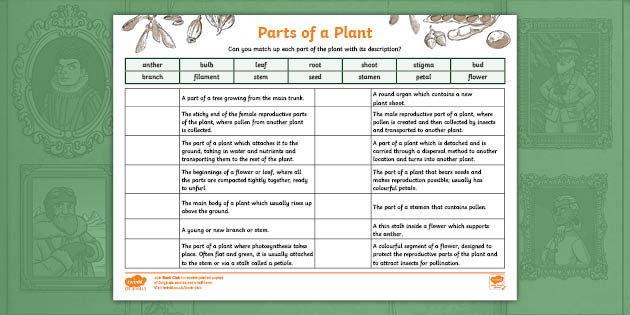
This activity sheet is the perfect way to reinforce children's knowledge of the different parts of a plant. KS2 children can read the definitions, and then use their knowledge to match it to the correct vocabulary word available in the word bank. This is a great way to build vocabulary and ensure that children understand the meaning of the vocabulary that they learn.
This informative and detailed glossary includes definitions for a wide range of plant-related vocabulary, including various parts of plants. You could keep this on hand as a reference when you're planning your lessons or when you're teaching. Alternatively, print out copies for your children to refer to whenever they're completing a reading or writing activity about plants.
An important part of plants is their seeds, as they allow more and more plants to grow. With this activity pack, children can learn more about this part of a plant in more detail. It includes a PowerPoint about how plants spread their seeds and a cut and stick activity where they'll need to match the image with the type of seed dispersal.
Some plants are more peculiar than others! Your children can learn all about these strange plants (and the parts of them that make them so strange) with this reading comprehension resource pack. It includes information sheets about the plants, questions to assess children's understanding and answer sheets to make marking a breeze for you.
 Home
Home  Membership
Membership  Customer Support
Customer Support  Create
Create  Blog
Blog 

